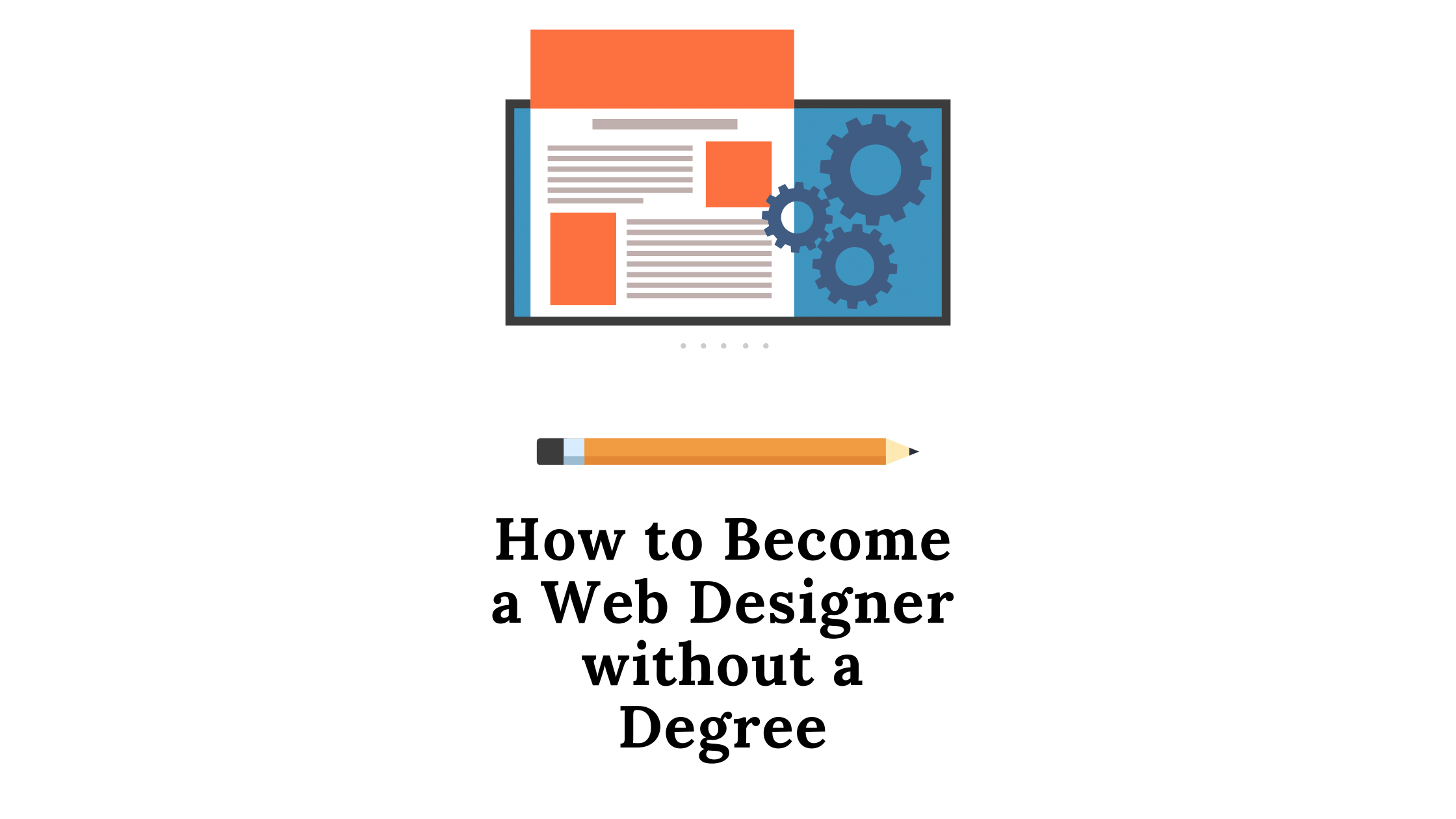
So you want to be a web designer? That’s great! It’s a challenging and rewarding field, and there are plenty of opportunities for talented designers. But how can you become a web designer without a degree? It can be done, but it will take some hard work and determination. In this article, we will discuss the steps that you need to take to become a successful web designer without a degree. Let’s get started!
What is a Web Designer’s Job?
A web designer’s job is to create and design the layout of web pages, icons, banners and other visual media; Use a combination of graphic design skills (photography and illustration) with technical computer skills (HTML/CSS); Have an understanding of various technologies used in website development such as HTML, CSS and Javascript. They also need good communication skills for interacting with clients or employers on projects; Understand usability principles like how users interact with websites so that they can make sure their designs are usable by all people regardless of physical ability or age group. You don’t want someone who doesn’t know what they’re doing designing your site!
What is the Difference Between a Web Designer and a Web Developer?
Both web designers and web developers are essential for creating a website. However, the two roles have different responsibilities. So, what’s the difference between these professionals?
A web designer is responsible for the look and feel of a website. They work with graphics, colors, and fonts to create a visually appealing site. In addition, they may also be involved in creating logos and branding for a company.
A web developer is responsible for the functionality of a website. They build the skeleton of a site using HTML, CSS, and JavaScript. They also develop back-end systems using PHP or Ruby on Rails. Additionally, they may be responsible for integrating third-party services into a website.
So, which role is more important? Both are essential for creating a website. If you have an idea for a website, don’t choose between being a web designer or web developer – learn both!
Research what it takes to Become a Web Designer
Now that you know what a web designer is and what they do, it’s time to research what it takes to become one. Unfortunately, there is no one-size-fits-all answer to this question. It depends on your skills, experience, and education. However, we can give you some general advice on how to become a web designer.
The best way to become a web designer is to have an education in graphic design or another related field. Many colleges and universities offer degree programs in graphic design or web development. These programs will teach you the basics of designing for the web, as well as coding languages like HTML and CSS.
If you don’t have a degree in graphic design or web development, you can still become a web designer. You’ll just need to learn the basics of designing for the web on your own.
Learn HTML and CSS
Before you start learning about how to design websites, it is important that you know some basic programming languages such as HTML (HyperText Markup Language) and CSS (Cascading Style Sheets). These languages are used by every single website out there today!
You may have heard of HTML before. It’s one of the most popular programming languages in use today because it allows designers to create beautiful layouts with minimal coding skills required; however if they want their site visitors can also interactively modify certain elements like text or images without needing any specialized knowledge at all.
CSS is a style sheet language that allows you to control the look and feel of HTML elements on your website. With CSS, you can change the color, font, size, and more for any element on your page. This gives you a lot of flexibility when designing websites.
If you want to become a web designer, it is important that you learn both HTML and CSS. These languages will give you a strong foundation for creating beautiful websites.
Start Designing Websites
Once you have learned the basics of HTML and CSS, it’s time to start designing websites! Start by finding some online tutorials or courses that teach how to design for the web. There are plenty of these resources available online, so there’s no excuse not to learn.
In addition, you can also find plenty of resources for free on the internet. However, if you want to get more out of your learning experience, we recommend purchasing a few online courses or tutorials. This will give you access to high-quality content and expert instructors who can help guide you along your journey to becoming a web designer.
Get Experience Working on Real Projects

If you want to become a web designer, it’s important that you get some experience working on real projects. You can start by offering your services for free in exchange for feedback from clients or employers and then move up as soon as possible!
Landing your first job is always the hardest part of any career. However with enough persistence and determination, anyone can achieve their goals – no matter what they happen to be! Just remember that there are many people out there who need help designing websites so don’t give up hope just because someone says no.”
“The best way to learn how to become a web designer is by doing it yourself. You could take online courses or tutorials but nothing beats building something with your own two hands. If you want to be successful in this field then you need experience working on real projects and getting feedback from clients or employers as soon as possible.”
Create a Portfolio
Once you have learned how to design websites, it’s time to create a portfolio! A portfolio is an essential tool for any web designer – it allows you to showcase your work and skills to potential clients or employers.
There are many ways to create a portfolio. You could create a website specifically for your portfolio, or you could include your work samples in your resume or LinkedIn profile. However you choose to do it, make sure that your portfolio is professional and showcases your best work.
The most important thing when creating a portfolio is to be consistent. Make sure that all of the designs in your portfolio are of the same quality and style. This will help you look like a competent web designer and give potential clients or employers confidence in your abilities.
Network with other Professionals in the Field
One of the best ways to become a successful web designer is by networking with other professionals in the industry. Meeting other designers, developers, and clients will give you opportunities to learn from their experiences, get advice on your career, and find job leads or freelance work.
Attending local meetups, conferences, and industry events is one of the best ways to network with other web designers. It can also be beneficial for you as it gives people an opportunity to see your work in person – this will increase their trust in you as a designer!
Start Freelancing
Freelancing is another great way for aspiring web designers who want to gain experience and build up their portfolio before applying for full-time jobs or internships at agencies. You can find freelance opportunities on job boards like Upwork, Fiverr, Guru or even Craigslist; however many companies are hiring directly from graduates now so check out LinkedIn too!
One thing that’s important when starting out with freelancing: make sure not to underprice yourself! will only devalue your work in the long run.
The best way to find out what rate to charge for your services is to research other web designers and their rates. This will give you a good idea of what the market value is for your skills and experience.
Stay Motivated and Focused Throughout the Process
The process of becoming a web designer can be long and challenging, but it’s important to stay motivated and focused throughout. There will be times when you feel like giving up, but don’t let that stop you from reaching your goals!
Remember why you decided to become a web designer in the first place. Was it because you love designing websites? The satisfaction of seeing your work online and helping clients achieve their goals? Keep these things in mind when things get tough – they will help motivate you to keep going.
So there you have it: everything you need to know about becoming a web designer without a degree! Follow these tips and advice, and soon enough you too will be on your way to success! Good
Final Thoughts
Becoming a web designer without a degree can be challenging, but with hard work and dedication it is definitely possible! If you want to become a successful web designer, make sure that you learn HTML and CSS, create a portfolio, start networking with other professionals, and start freelancing. With these steps under your belt, you’ll be well on your way to reaching your goals!




